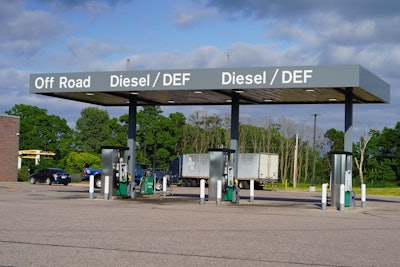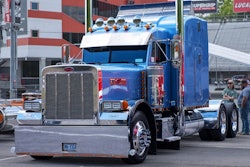
The Environmental Protection Agency (EPA) has for almost 20 years required medium- and heavy-duty diesel vehicles to use Diesel Exhaust Fluid (DEF) and aftertreatment systems to reduce nitrogen oxide (NOx) emissions.
The Trump administration targeted for repeal late last month the Endangerment Finding, which has allowed presidential administrations to regulate six greenhouse gases (carbon dioxide, methane, nitrous oxide, hydrofluorocarbons, perfluorocarbons, and sulfur hexafluoride) since 2009.
Such a measure, if finalized, would wipe out EPA’s greenhouse gas (GHG) rules for medium-duty vehicles and heavy-duty vehicles and engines, including standards first set in 2011 and those scheduled to take effect through the next decade. Trucking stakeholders, including truck and engine manufacturers, rejoiced at the news.
"We commend the U.S. Environmental Protection Agency (EPA) for its decision to revisit the Greenhouse Gas Phase 3 (GHG3) standards for heavy-duty vehicles," Daimler Truck North America (DTNA) said in a statement. "The original requirements for zero emission vehicles under GHG3 were infeasible in terms of technology readiness, infrastructure availability, and cost feasibility. We are pleased that the EPA is working to ensure that environmental progress is achieved in alignment with economic and operational realities."

However, even if the repeal of federal greenhouse gas mandates sticks, the emissions-related thing many fleets and drivers hate most – the aftertreatment system – won't be going away. In fact, it largely will be unaffected.
The reason the industry has an aftertreatment system is EPA's 2007 and 2010 Heavy-Duty Highway Engines and Vehicle emissions reduction regulations, which set standards for not only NOx but also particulate matter (PM). It also mandated the use of advanced emission control technologies like selective catalytic reduction (SCR) and diesel particulate filters.
"Completely separate," said North American Council for Freight Efficiency Executive Director Mike Roeth. "Aftertreatment is not a direct GHG solution. We tend to call NOx and PM pollutant emissions and they are directly attached to human health; breathing in these in the air... Carbon/GHG is different in that it affects climate, encouraging our more frequent and harsher weather events causing other health concerns."
EPA’s latest proposal focuses specifically on greenhouse gas pollutants.
DTNA noted in a statement to CCJ the proposal does not modify EPA's existing requirements for criteria pollutants, including NOx and PM. NOx and PM standards remain in place, and they continue to be enforced independently of any changes to GHG regulations.
"Selective Catalytic Reduction (SCR) systems, Diesel Exhaust Fluid (DEF), and aftertreatment technologies are essential components designed to reduce nitrogen oxides (NOx) regulated under the EPA's Clean Air Act," added Paccar companies Kenworth and Peterbilt. "The current aftertreatment systems related to NOx are still required to meet EPA and CARB standards and are independent of greenhouse gas (GHG) specific mandates."
Mack Trucks and Volvo Trucks North America said in a statement to CCJ they "are continuing to review the proposed rule."
Covered in the Endangerment Finding is nitrous oxide (N2O). NOx is shorthand for nitric oxide (NO) and nitrogen dioxide (NO2), the nitrogen oxides most relevant for air pollution. NOx itself is not considered a greenhouse gas; rather it plays a role in the formation of ozone, a naturally occurring greenhouse gas. Thus, NOx is not a greenhouse gas and the aftertreatment system as a whole, including DEF, wouldn't be affected by this pending regulatory change.
However, EPA Administrator Lee Zeldin said in March his office intends to revisit portions of the Biden-era Clean Trucks Plan, which includes the 2022 Heavy-Duty NOx rule – a standard that includes new, more stringent emissions standards that cover a wider range of heavy-duty engine operating conditions and requires these more stringent emissions standards to be met for a longer period of time.
"Peterbilt and Kenworth remain committed to delivering clean, efficient, and compliant vehicles that meet all applicable emissions regulations," the companies added. "We continue to monitor the regulatory landscape, and we have plans in place to fully comply if regulations change. We are strongly positioned to adapt and continue to deliver the best solutions for our customers."












